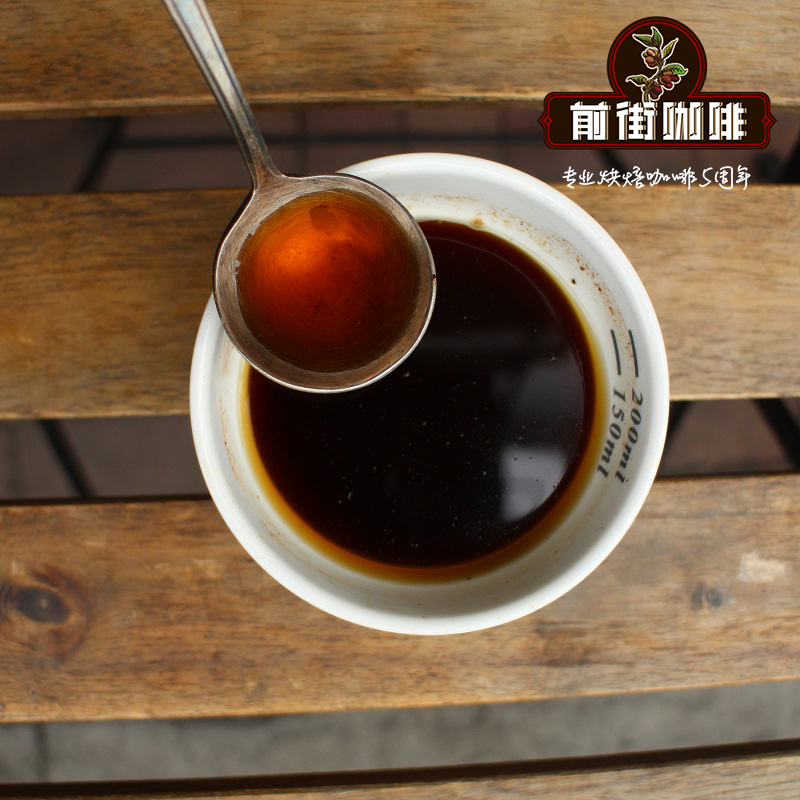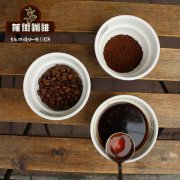What are the ways to treat coffee beans? What are the characteristics of honey-treated coffee beans?

Professional coffee knowledge exchange more coffee bean information please follow the coffee workshop (Wechat official account cafe_style)
What are the ways to treat coffee beans? What are the characteristics of honey-treated coffee beans?
After the planting and harvest of the manor, the next step is the most important step in addition to the variety and planting land: the "post-treatment method". At present, most of the treatment methods are mainly sun exposure, semi-washing, water washing, and there are several special treatment methods: honey treatment, in vivo treatment, and so on. There are also many people sharing these treatments on the Internet, and the author's writing is more or less the same, but my preference for the treatment is also different. In addition to writing down the treatment according to my own humble ideas, I will add some of my own ideas to it. If these ideas are biased, please give me some advice.
But the first thing you will experience before treatment is to really pick out the ripe fruit; there are two methods: first, use color distinction: usually the ripe fruit will be characterized by red skin, at this time most of the sugar in the pectin layer has infiltrated into the fruit, which will greatly increase the sweetness and aroma; on the other hand, if the fruit is not ripe, it will contain a lot of chlorogenic acid and high concentration of citric acid, which will add acidity to the coffee fruit.
Second, throw all the picked fruits into the sink: ripe and soon-to-ripe fruits will sink to the bottom of the water, while immature and bad fruits will float, but sometimes a large number of ripe fruits will be found under the sink. So when using this method, you should still pay attention to the condition under the sink with color.
Solarization:
It is usually used in countries where water is scarce, but in recent years it has been used by some manors in pursuit of special flavor because of its unique flavor. After selecting the ripe fruit, spread it in the bean drying farm for natural drying, turn the coffee beans at any time to avoid partial dampness and cause mildew, and the time depends on the climate, about two to four weeks after the water content of the fruit is reduced to less than 12% and hardened, then use a sheller to remove the dry hard pulp and sheep skin, take out the coffee beans. This treatment is most afraid of mildew caused by rain and moisture, and it needs to be moved indoors every night to avoid excessive moisture.
The author likes the flavor of this kind of treatment very much. Although I have drunk the horrible flavor of overfermentation, it is really fascinating in the case of moderate fermentation. Sun-exclusive berries and wine flavors can give them a very beautiful flavor no matter what cooking method is used, but there is a miscellaneous flavor that is easy to show, which tests the ability of bakers and bar players.
Half-sun method: divided into Brazilian half-sun, mechanical half-sun
Brazil half-sun: after picking out ripe fruit, sift out pectin-containing pods Without fermentation, move to the outdoor bean drying farm. Because of the dry climate in Brazil, the pectin will harden in about a day. During this period, the pods need to be turned to avoid moisture regain and stink. In about two to three days, the pods can reach a certain degree of dehydration. In the use of a dryer, the water content is reduced to 10.5%-12%, and the beans are further matured in dozens of days. Before export, the sheep skin is ground and coffee beans are graded.
Mechanical half-sun: use areas where water resources are scarce and moisture is heavy. After picking out the ripe fruit, sift out the pectin-containing pods, pour them directly into the pectin scraper, take out the smooth pods, and then expose them outdoors until the water content is reduced to 12%.
In a suitable degree of sun exposure, with a little sun smell, there are more layers of berry aroma and coffee bean sweetness; but if it is not handled well, the moisture content is reduced too much or the sun time is not enough to make the water content too high. sweetness and sun smell will cause a very high drop in the overall ratio.
Washing method: general washing, Kenyan washing, Luanda washing
Water washing method can make coffee raw beans beautiful color, good appearance and high quality; sour flavor and brightness are better, but the water cost is very high, so it is not suitable in some countries with backward water resources.
General washing method: after selecting the ripe fruit, move it to the pulp screening machine, followed by the most important water washing and fermentation treatment to remove the pectin layer; the causal gum layer is not easy to remove with water, so it is hydrolyzed by various bacteria in the water to decompose the resulting gelatine acid, during which it is necessary to constantly stir and rinse the raw coffee beans in the tank with water to speed up the pectin detachment from the pods. The time is about 12-36 hours, depending on the temperature and humidity, malic acid, citric acid, acetic acid, lactic acid, propionic acid will be naturally produced in the tank, and some sour elves will seep into the coffee beans at the same time; check the fermentation status in the tank at any time, check whether the pectin layer has fallen off, in order to avoid excessive fermentation to produce too much fatty acid and butyric acid and give off the stench; take out the coffee beans after washing and fermentation and enter the warehouse after drying.
Kenyan water washing: after starting the process with the general water washing method, first ferment naturally for 12 hours (mainly with a pH value of 4.5-4.8), then wash off 80%-90% pectin layer, clean it after natural fermentation for 24 hours, and then soak in water for 24 hours. Dry and then enter the warehouse.
Luanda style washing: after starting the process with the general water washing method, first ferment naturally for 12 hours, clean, soak in water for 24 hours, wash again, soak in water for 20 hours, dry and then enter the warehouse.
This kind of washing method makes coffee beans have clean and bright acidity, high water content, bright sour aroma, high sweetness and clean taste. The author feels most about this kind of treatment, and it is easy to have more distinguishable layers, and it is easier to find the unique taste of coffee and the special flavor of the place of origin.
Honey treatment:
The so-called honey treatment is to remove the coffee cherry peel, leaving the sticky pulp part, and then drying, and then remove the pulp layer and pectin layer, and then into the warehouse. During the drying period, it is necessary to turn continuously with high frequency to avoid mildew caused by sticking between the pulp; and it needs to be dried in a short time to avoid excessive fermentation; the honey treatment is prone to risk for many of the above reasons, so it will require more manpower and time costs than other treatment methods. The proportion retained in the pulp is divided into several honey treatments: 80% of the pulp "black honey", 60% of the pulp "red honey", 40% of the pulp "yellow honey" and 20% of the pulp "white honey", all with different flavors and displays.
It is common for the same coffee bean to have a higher body size, a longer tail rhyme, and a good performance in the display of sweetness, and can even pull the sweetness to the end of the rhyme; but it is a pity that it is more difficult to drink clean honey-treated coffee beans, and the miscellaneous smell often floats out suddenly and then disappears, but the overall taste does not affect the appearance of the taste.
Important Notice :
前街咖啡 FrontStreet Coffee has moved to new addredd:
FrontStreet Coffee Address: 315,Donghua East Road,GuangZhou
Tel:020 38364473
- Prev

Does honey treat the pulp of coffee beans? What are the characteristics of honey treatment?
Professional coffee knowledge exchange more coffee bean information please pay attention to the coffee workshop (Wechat official account cafe_style) honey processing coffee beans containing pulp? What are the characteristics of honey treatment? Honey treatment is a kind of treatment which is between the sun treatment and the washing method. It keeps the coffee clean, and although the brightness decreases, it increases the sweetness and caramel flavor of the coffee.
- Next

What are the flavor characteristics of Indonesian Aijianmi in West Java? What kind?
Professional coffee knowledge exchange more coffee bean information please follow the coffee workshop (Wechat official account cafe_style) what are the flavor characteristics of Indonesian Igni honey handling in West Java? What kind? Variety source: collect and screen by hand, retain the ripe fruit, remove the fruit during treatment, retain the pulp, place it in the greenhouse for 21 days, and turn it every 30 minutes to reach
Related
- Detailed explanation of Jadeite planting Land in Panamanian Jadeite Manor introduction to the grading system of Jadeite competitive bidding, Red bid, Green bid and Rose Summer
- Story of Coffee planting in Brenka region of Costa Rica Stonehenge Manor anaerobic heavy honey treatment of flavor mouth
- What's on the barrel of Blue Mountain Coffee beans?
- Can American coffee also pull flowers? How to use hot American style to pull out a good-looking pattern?
- Can you make a cold extract with coffee beans? What is the right proportion for cold-extracted coffee formula?
- Indonesian PWN Gold Mandrine Coffee Origin Features Flavor How to Chong? Mandolin coffee is American.
- A brief introduction to the flavor characteristics of Brazilian yellow bourbon coffee beans
- What is the effect of different water quality on the flavor of cold-extracted coffee? What kind of water is best for brewing coffee?
- Why do you think of Rose Summer whenever you mention Panamanian coffee?
- Introduction to the characteristics of authentic blue mountain coffee bean producing areas? What is the CIB Coffee Authority in Jamaica?

